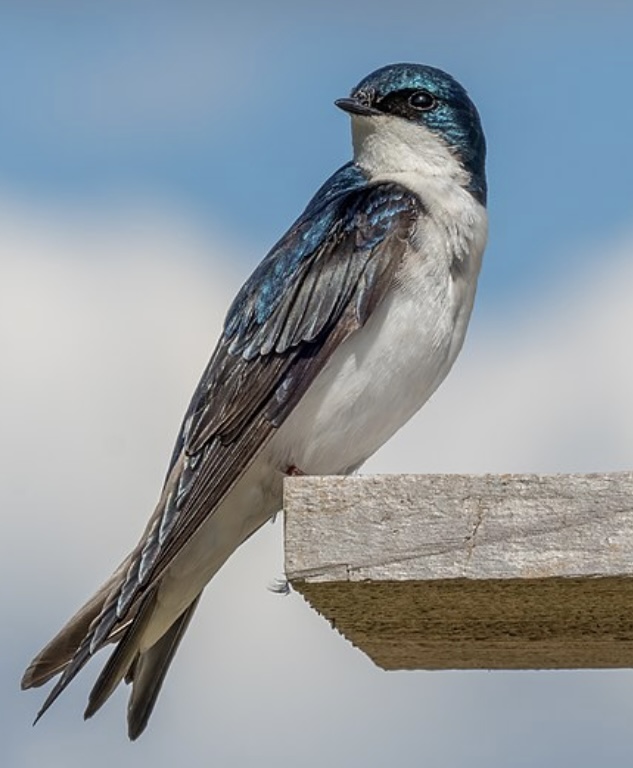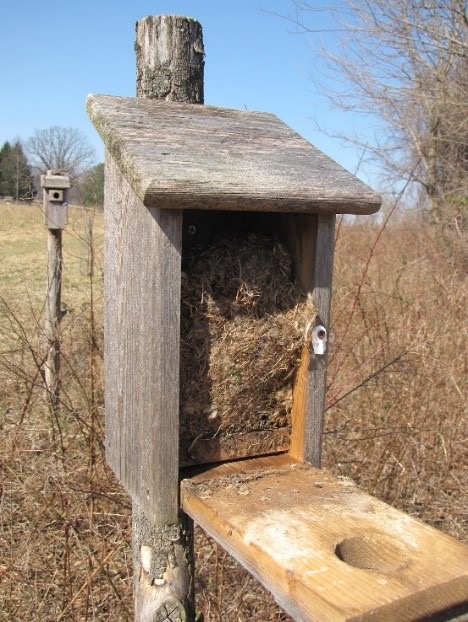
This year it is white-footed mice – lots of them!
Each spring volunteers clean our birdhouses to prepare for the new nesting season. The Land Trust maintains 30 bluebird-type nesting boxes located on 10 preserves. It is always a surprise when a volunteer opens a house, and a mouse leaps out. This year, volunteers Sarah and Ronnie Breznen, Russell and Warren Lane, Ellen Williams, Joan Guzzetti, board member Eads Johnson, and our Land Steward Brian Cucchiara were treated to many such surprises.
Our post-mounted birdhouses are designed to attract small cavity-nesting birds, which generally nest in natural hollows in trees and fence posts. We hope to attract bluebirds and/or tree swallows to the boxes in our meadow locations. Both forage for insects during the breeding season.

Bluebirds hunt near the ground for crickets, grasshoppers, beetles and spiders.

Tree swallows hunt on the wing swooping above meadows after flying insects.
Our bluebird boxes also appeal to chickadees and house wrens. The latter are very territorial and can be aggressive towards other nesting birds. Wrens are known to puncture the eggs of rivals and take over their nests.
When volunteers check on our boxes each spring, they record the location and box number and take photos of any nests inside. This data helps NCLT assess what birds are using our boxes.
Each species constructs unique nests using different materials:

Bluebirds weave grasses

Tree swallows weave grasses with feathers

Chickadees use grass, moss & feathers

Wrens pack the box with sticks

A typical mouse nest contains a disordered jumble of vegetation.
White-footed mice typically live in our boxes over the winter. This year, however, they appear to have moved in permanently. While our boxes have predator guards to prevent larger birds, such as blue jays or raccoons, from marauding the eggs and babies, they don’t keep out the mice.
Due to the present mouse infestation, NCLT is re-evaluating how our boxes are mounted. They currently sit on top of rustic cedar logs, which make it easy for mice to climb up. We plan to switch to mounting our houses on thin metal poles fitted with a conical squirrel baffle. We may also attach metal flashing to some of our existing poles. Both methods should deter mice from climbing up and moving in.
As nesting season is upon us, we plan to refit the houses later in the summer.
Recent Comments